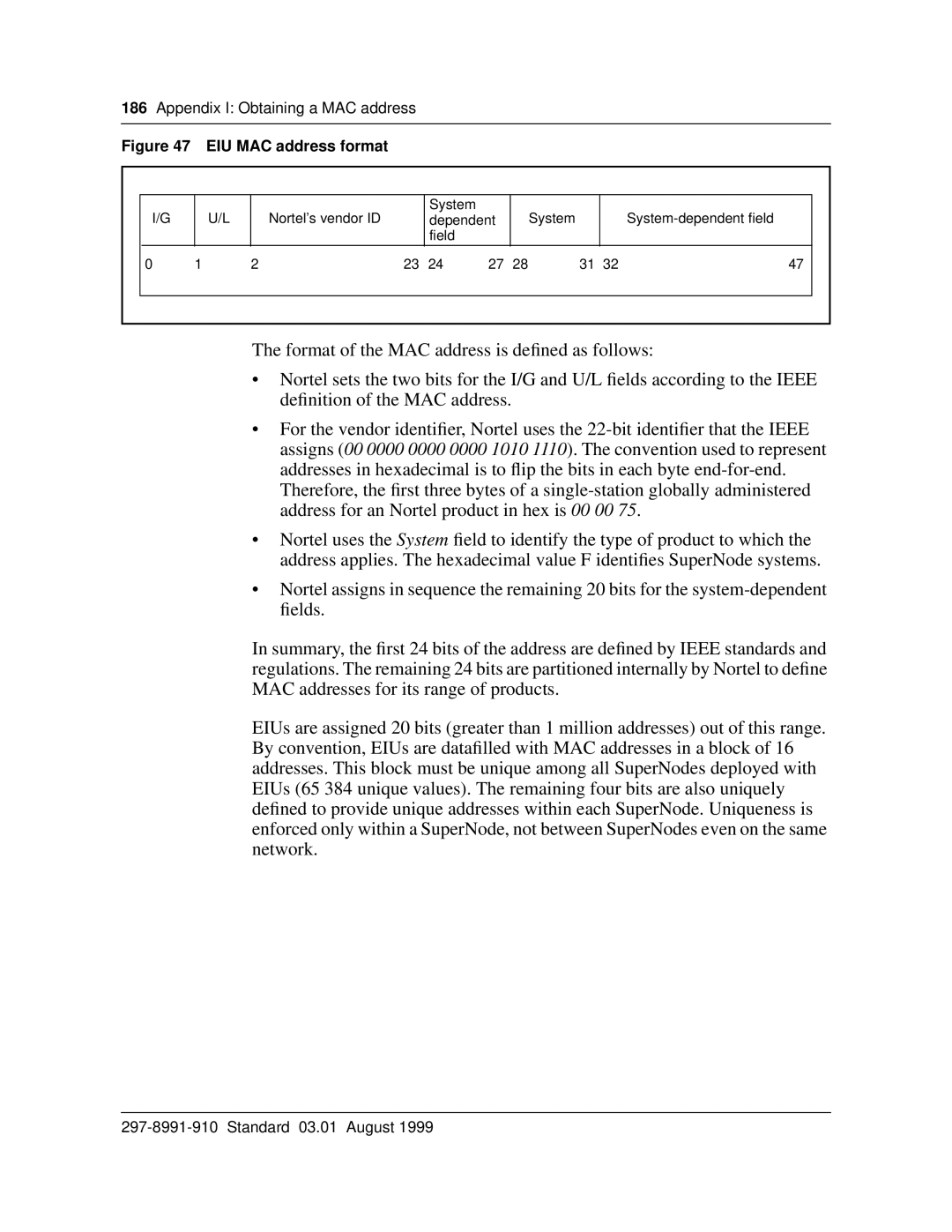
186Appendix I: Obtaining a MAC address
Figure 47 EIU MAC address format
|
|
|
|
|
|
|
|
|
|
|
|
|
|
|
|
|
|
|
|
|
|
|
|
|
|
|
|
|
|
|
|
|
|
|
|
|
|
|
|
|
|
|
|
|
|
|
|
|
|
|
| System |
|
|
|
|
|
|
|
|
|
|
|
|
|
|
|
| |
|
|
| I/G |
|
| U/L |
|
| Nortel’s vendor ID |
|
|
|
| dependent |
|
| System |
|
|
|
|
|
|
| ||||||||||
|
|
|
|
|
|
|
|
|
|
|
|
|
|
|
|
| field |
|
|
|
|
|
|
|
|
|
|
|
|
|
|
|
| |
|
|
|
|
|
|
|
|
|
|
|
|
|
|
|
|
|
|
|
|
|
|
|
|
|
|
|
|
|
|
|
|
|
|
|
|
|
|
|
|
|
|
|
|
|
|
|
|
|
|
|
|
|
|
|
|
|
|
|
|
|
|
|
|
|
| ||||
| 0 |
|
| 1 |
| 2 |
|
| 23 | 24 | 27 | 28 |
| 31 | 32 | 47 |
| |||||||||||||||||
|
|
|
|
|
|
|
|
|
|
|
|
|
|
|
|
|
|
|
|
|
|
|
|
|
|
|
|
|
|
|
|
|
|
|
|
|
|
|
|
|
|
|
|
|
|
|
|
|
|
|
|
|
|
|
|
|
|
|
|
|
|
|
|
|
|
|
|
|
|
The format of the MAC address is defined as follows:
•Nortel sets the two bits for the I/G and U/L fields according to the IEEE definition of the MAC address.
•For the vendor identifier, Nortel uses the
•Nortel uses the System field to identify the type of product to which the address applies. The hexadecimal value F identifies SuperNode systems.
•Nortel assigns in sequence the remaining 20 bits for the
In summary, the first 24 bits of the address are defined by IEEE standards and regulations. The remaining 24 bits are partitioned internally by Nortel to define MAC addresses for its range of products.
EIUs are assigned 20 bits (greater than 1 million addresses) out of this range. By convention, EIUs are datafilled with MAC addresses in a block of 16 addresses. This block must be unique among all SuperNodes deployed with EIUs (65 384 unique values). The remaining four bits are also uniquely defined to provide unique addresses within each SuperNode. Uniqueness is enforced only within a SuperNode, not between SuperNodes even on the same network.
